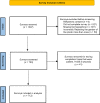Race and Gender-Based Perceptions of Older Septuagenarian Adults
- PMID: 36479377
- PMCID: PMC9712052
- DOI: 10.1089/whr.2022.0063
Race and Gender-Based Perceptions of Older Septuagenarian Adults
Abstract
Objectives: Older adults face racism, sexism, and ageism. As the U.S. population ages, it is important to understand how the current population views older adults.
Methods: Participants recruited through Amazon's Mechanical Turk provided perceptions of older Black and White models' photographs. Using mixed-effect models, we assessed interactions between race and gender of participants and models.
Results: Among Participants of Color and White participants (n = 712, 70% non-Hispanic White, 70% women, mean 37.81 years), Black models were perceived as more attractive, less threatening, and sadder than White models, but differences were greater for White participants (race-by-race interaction: attractive p = 0.003, threatening p = 0.009, sad p = 0.016). Each gender perceived their respective gender as more attractive (gender-by-gender interaction p < 0.0001). Male and female participants perceived male models as happier than female models, but differences were greater for male participants (p = 0.026). Irrespective of participant age group, women were perceived as more threatening (p = 0.012). Other perceptions were not significant.
Discussion: Participants had few biases toward older Black and White models, while gender biases favored men.
Keywords: bias; gender disparities; geriatric; racial disparities.
© Forest Melton et al., 2022; Published by Mary Ann Liebert, Inc.
Conflict of interest statement
Authors declare no conflict of interest.
Figures






Similar articles
-
Race and Gender-Based Perceptions of Older Adults: Will the Youth Lead the Way?J Racial Ethn Health Disparities. 2021 Dec;8(6):1415-1423. doi: 10.1007/s40615-020-00903-7. Epub 2020 Nov 3. J Racial Ethn Health Disparities. 2021. PMID: 33145664 Free PMC article.
-
Effect of Physician Gender and Race on Simulated Patients' Ratings and Confidence in Their Physicians: A Randomized Trial.JAMA Netw Open. 2020 Feb 5;3(2):e1920511. doi: 10.1001/jamanetworkopen.2019.20511. JAMA Netw Open. 2020. PMID: 32083686 Free PMC article. Clinical Trial.
-
Racial/Ethnic Differences in Psychiatric and Medical Diagnoses Among Autistic Adults.Autism Adulthood. 2022 Dec 1;4(4):290-305. doi: 10.1089/aut.2021.0083. Epub 2022 Dec 13. Autism Adulthood. 2022. PMID: 36601333 Free PMC article.
-
Who is a typical woman? Exploring variation in how race biases representations of gender across development.Dev Sci. 2022 Mar;25(2):e13175. doi: 10.1111/desc.13175. Epub 2021 Sep 16. Dev Sci. 2022. PMID: 34468071 Free PMC article.
-
Neighborhood Factors, Individual Stressors, and Cardiovascular Health Among Black and White Adults in the US: The Reasons for Geographic and Racial Differences in Stroke (REGARDS) Study.JAMA Netw Open. 2023 Sep 5;6(9):e2336207. doi: 10.1001/jamanetworkopen.2023.36207. JAMA Netw Open. 2023. PMID: 37773494 Free PMC article.
References
-
- Lauren M, Shannon S, Jonathan V.. Living Longer: Historical and Projected Life Expectancy in the United States, 1960 to 2060. U.S. Census Bureau; Washington, DC, 2020:25–1145. Available at: https://www.census.gov/library/publications/2020/demo/p25-1145.html [Last accessed: January 2, 2020].
-
- Marcum JA. Clinical decision-making, gender bias, virtue epistemology, and quality healthcare. Topoi 2017;36(3):501–508; doi: 10.1007/s11245-015-9343-2 - DOI
Grants and funding
LinkOut - more resources
Full Text Sources
Research Materials
